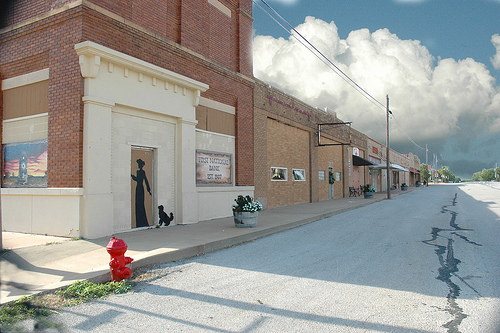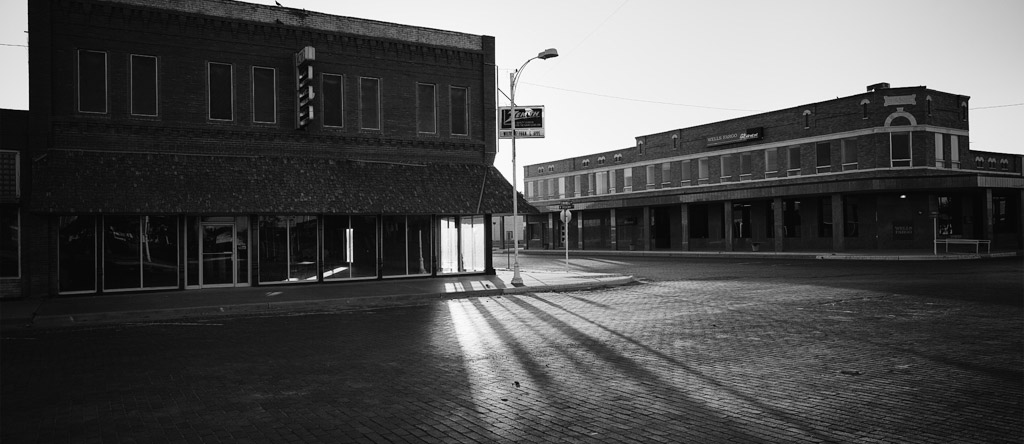Spending a night or two in Boringsville is an inevitable part of long term travel: you need to make a train or bus connection, or it’s the only place you can find some accommodation. Whatever the reason, there’s no need to make your stay in a small, insignificant town boring. It can be even better than hitting the big smoke or camping out in the national park, you just have to know how.
Vagabondish is reader-supported. When you buy through links on our site, we may earn a small affiliate commission. Read our disclosure.
Tip #1: Start with the Right Attitude
Change the name of this place you’ve landed in. Replace Boringsville in your head with the idea that you can have a one-day adventure here. I absolutely believe that there is something interesting to see and do in every town and village on earth. If you can’t prove this true, then you’re just not trying hard enough.
Tip #2: Get a Map
Small towns often have a surprisingly large network of streets to explore. If there’s a tourism office (yes, even small towns have one, very often!) ask for a map there, or otherwise try at your hotel or motel or at a gas station. Nearly every time I’ve done this I’ve been surprised to discover that the town actually extended somewhere away from the main street, into areas I probably never would have discovered if I’d just been wandering aimlessly.
Scour the map for hints on interesting places, too. Local cemeteries can often provide some interesting stories or a photogenic landscape, for example. Check for nature trails, parks, churches and historical buildings and mark any places you’d like to walk by.

Byers, Texas … Downtown © anyjazz65
Tip #3: Find the Local Museum
“This place won’t have a museum!” is a sentence I’ve heard many times (often in my own head). Recently I spent a night in Merredin, a small town in the Western Australian wheatbelt region, and this phrase was proved absolutely wrong once more. They had more than one museum! One was a cute Railway Museum literally in the top of the railway station building, and there was a Military Museum too.
One catch in a lot of small towns is that these museums only have limited opening hours, so check into the situation early to make sure you don’t miss out. (I say this from experience since I didn’t get to see Merredin’s Military Museum!). These small museums say a lot about the local people and what’s important to them and you can often find some real gems of information.
Tip #4: Talk to the Locals
In every small town I’ve ever visited, the locals are so surprised to see an interested tourist that they’ll go out of their way to help you out. They’re proud of their hometown and want others to know why.
It’s usually pretty easy to get chatting with a local in a small town. Walk into any shop or talk to the people at the hotel, and with the slow pace of life in most such towns they’re bound to have time to talk to you. Tell them that you’re interested in learning more about the town and ask for suggestions on where you can go. In the past this approach has got me a lift with a restaurant owner’s brother out to a small church a few miles away from the Russian village I was visiting, to see something beautiful that very few tourists ever lay eyes on.

Small Town Boy, Brasil © Leonardo Bighetti
Tip #5: Give Yourself a Project
Even a town that appears to have nothing special about it is still a minefield of potential activities for you. Once stuck in a small village in outback New South Wales for a day to get a bus connection onward, I noticed that in this town, like many, the town name was included in pretty much every shop name and in many other places too. I started wandering the place with my camera taking photos of each version of the town name and later Photoshopped them into an interesting collage — unfortunately the biggest impression was that the town needed to take some care to upgrade its decaying signage.
Nearly every traveler’s got a digital camera these days, so look out for your own project: roof colors, window shapes, trash cans, whatever takes your fancy. Without a camera, you can also find some projects to spend your time on: surveying the kinds of people who shop in the town each day or checking car license plates to see where they’re from. Be open to any kind of distraction and you’ll be quite amazed how interesting these small details can become.
Tip #6: Be Proud to be a Pioneer
Plenty of travelers can say they’ve been to Paris or Sydney but a lot fewer can claim knowing much about the world’s millions of smaller towns and villages. Spending time in a smaller place gives you the chance to gather unique stories that you’ll reminisce about for years to come.
When I was backpacking through Estonia and got to the western island of Saaremaa, most of the travelers around me stopped there and hit the pizza shop. But I’d seen a tiny spot on my map and read that I could get a boat across to Abruka Island, a settlement of some 14 people. I spent a fabulous day there walking across fields with a local dog who adopted me, checking out the local ceremony and even got a concert out of it — a group of church choir singers from the mainland happened to be there that day to sing for the local residents. I’ve never met anyone else who’s made the trip to Abruka Island, so I’m proud of my interesting day there.
Tip #7: Enjoy the Relaxation of a Small Town Outing
A small town stopover is really a huge blessing. Whether you’re mostly hiking national parks or doing heavy city-based sightseeing, breaking up your trip with a short stay in a small, quiet town is a great way to refuel your energy and start to see things with fresh eyes again. Sleep a bit later without feeling guilty that you’re missing out on too much; spend an afternoon in the local café reading a book or catching up on writing a few postcards; or stretch your legs with a long walk after too much time on trains or planes.
Enjoy the chance to relax a little — after all, traveling is meant to be fun, so make the most of every situation you come across.


